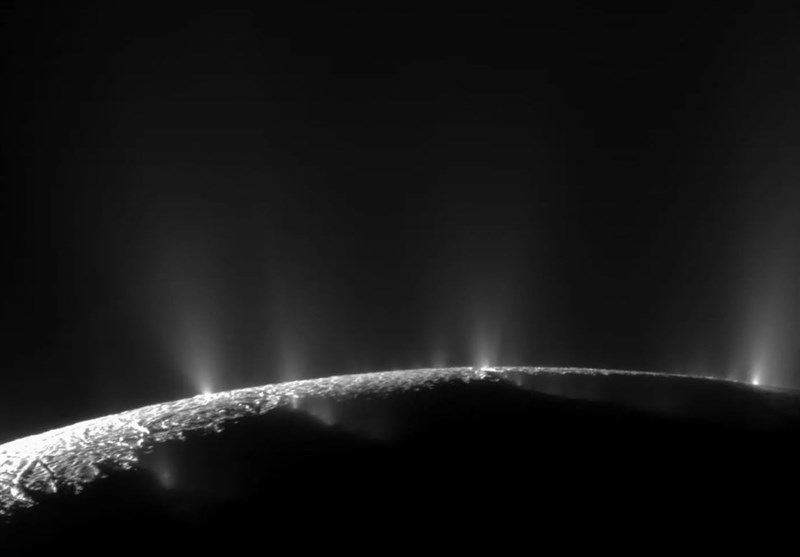Signs of Life Could Survive on Saturn, Jupiter's Moons
TEHRAN (Tasnim) - Detectable trace molecules, if life exists on the icy ocean moons of Enceladus and Europa, could survive just below their frozen surfaces, according to new research.
Scientists have theorized that Enceladus, one of Saturn's moons, and Europa, one of Jupiter's Galilean moons, could host vast liquid water oceans that harbor life.
These oceans could contain complex organic molecules like amino acids and nucleic acids, which serve as biosignatures of life, according to Space.com.
However, both moons are bombarded by harsh radiation from the sun, which could destroy these molecules at the surface.
New research suggests that biosignatures could survive if preserved in the icy shells of the moons, allowing future robotic landers to potentially dig them free.
"Based on our experiments, the 'safe' sampling depth for amino acids on Europa is almost 8 inches (20 centimeters) at high latitudes of the trailing hemisphere," said research leader Alexander Pavlov of NASA's Goddard Space Flight Center.
Pavlov added that on Enceladus, "Subsurface sampling is not required for the detection of amino acids — these molecules will survive radiolysis at any location less than a tenth of an inch (a few millimeters) from the surface."
Dramatic plumes erupting through Enceladus' icy shell could enable orbiting robotic missions to collect biosignature molecules without visiting the surface.
Despite Europa and Enceladus being prime candidates for life, such life would likely exist deep beneath their icy surfaces, protected from harmful radiation.
Both moons are believed to have liquid water oceans warmed by geothermal heat, potentially hosting life if the chemistry and energy sources are right.
Pavlov's team tested amino acids under radiolysis, noting that these molecules, crucial for life on Earth, could indicate life if found on Europa or Enceladus.
Amino acids could reach the surface via geysers or the churning icy shells.
The team sealed amino acid samples in airless vials, chilled them to minus 321 degrees Fahrenheit (minus 196 degrees Celsius), and bombarded them with gamma rays to test survival capabilities.
They also tested amino acids in dead bacteria and with meteorite material to evaluate survival.
The team calculated drilling depths and locations where amino acids could survive radiolytic destruction.
Their research was the first to consider lower radiation doses and the effect of meteorite dust on amino acid survival.
They found amino acids degraded faster when mixed with meteorite dust but slower in dead microbacteria, suggesting bacterial material shields amino acids from radiation.
"Slow rates of amino acid destruction in biological samples under Europa- and Enceladus-like conditions bolster the case for future life-detection measurements by Europa and Enceladus lander missions," Pavlov said.
"Our results indicate that the rates of potential organic biomolecules’ degradation in silica-rich regions on both Europa and Enceladus are higher than in pure ice and, thus, possible future missions to Europa and Enceladus should be cautious in sampling silica-rich locations on both icy moons."
